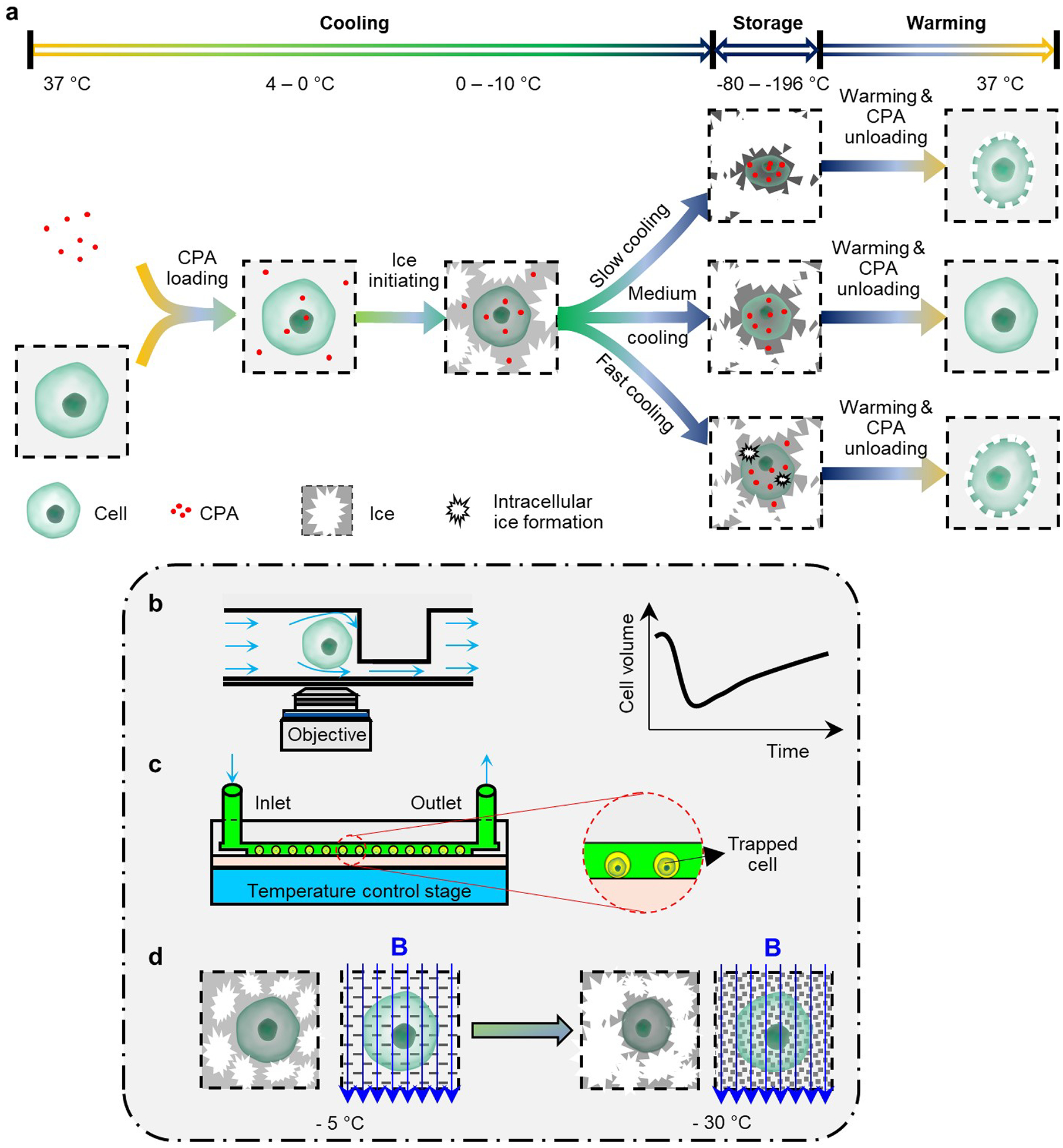Fig. 3 |. Slow freezing.

a, Steps in slow freezing, and mechanisms of the cryoinjuries that it can cause. For specific types of cell, there are optimal cooling rates that minimize cell injury, owing to excessive cell dehydration and intracellular ice formation. b, Microfluidic perfusion for the investigation of the cell-transport properties of water and of the cryoprotectant agents (CPAs). c, On-chip cryopreservation allowing for the visualization and study of cell responses at the single-cell level. d, Magnetic cryopreservation for the modulation of the kinetics of ice formation. Magnetic fields can drive the formation of finer ice crystals and thus less cellular damage.
